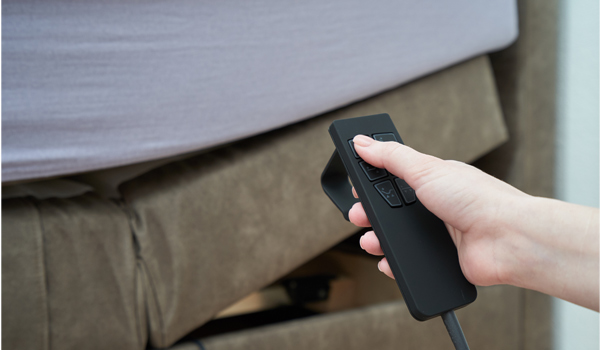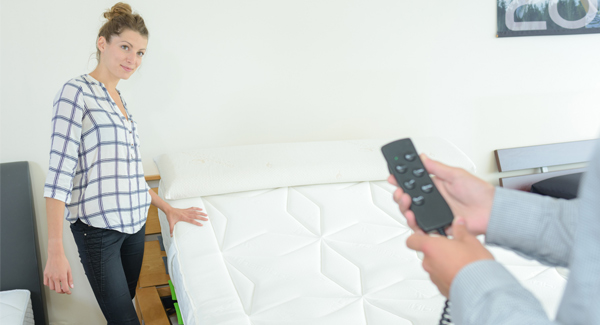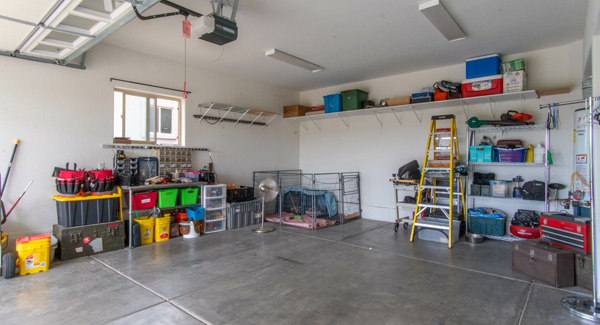Article navigation
- Published:
- Written by: Tony Brown
- Topic: Beds
There are several reasons why you might need to move an adjustable bed. For example, if you’re relocating, rearranging a bedroom or someone is unwell or has mobility issues and you need to move the bed downstairs.
However, adjustable beds contain various moving parts, making them heavy and difficult to move. Fortunately, with proper planning and preparation, you can safely move the adjustable bed to the desired location.
Prepare the route
Before attempting to move the adjustable bed, measure the length and width of the room, the bed is intended for. This will give you an understanding of the available space and whether the move is feasible.
Next, ensure there is a clear path to the destination by measuring doorways, landings and staircases. Identify any further restrictions along the path, such as low ceilings, narrow bends, and handrails, and measure the clearances to ensure the bed will fit through the available space.
You may also need to remove potential obstacles, such as pictures, rugs, and light fixtures, to prevent injuries and breakages during the move.
Then, note the bed’s dimensions. Many bed frames can be dismantled, allowing you to detach the headboard, footboard and side rails. Similarly, larger divan beds often have a split base, making them easier to manoeuvre.
Adjustable mattresses also have more flexibility than regular mattresses so that they conform to the shape of the adjustable base when in operation. This makes them easier to manoeuvre. However, it’s advisable to double-check the manufacturer’s care instructions before bending or folding the mattress.
Disassemble the adjustable bed
Once you’ve established a clear path, it’s time to prepare the bed for the move. Most beds are too large to fit through a doorway, so they must be disassembled. Before you start, ensure you have plenty of space to work with.
First, remove all bedding. You might want to wash your bedding so that it’s clean and fresh when the bed is ready for use again. Next, remove the mattress from the base and, ideally, place it in a polythene mattress bag to protect it from dust and debris during the move. Keep the mattress flat and supported, and avoid propping it up on its side to prevent permanent distortion or loss of shape.
Unplug the bed from the electrical outlet and keep the cables out of the way during the move to avoid tripping over them.
How you disassemble the bed depends on whether it’s a divan or a bed frame. Divans typically have one or two sections, depending on the size. Remove the linking bars or u-clips to separate the bases. Bed frames, on the other hand, can often be flat-packed.
Lifting out the mechanism that supports the mattress may be possible, making the base lighter and easier to carry. You may also be able to unclip the motor, although reattaching it can sometimes be challenging.
Detach the headboard, if the bed has one, by removing the screws or bolts. Also, remove the footboard and side rails if dismantling a frame. Keep the fittings secure in a plastic bag or envelope so you can easily retrieve them when you reassemble the bed.
If you’re moving the bed to another property or location, ensure it is well-wrapped and protected to preserve its condition. Protect delicate parts with bubble wrap and cover the bed with heavy-duty blankets to reduce the risk of damage during transit.
Move the adjustable bed to the desired destination
Adjustable beds are heavy and should not be moved by one person. Attempting to lift the bed alone could result in an injury and increases the likelihood of damaging the bed, nearby items or property.
Ask a friend or family member for assistance to ensure you move the bed safely. Consider asking another person to help you navigate and guide you to your destination.
Despite the safety mechanisms in adjustable beds, never put hands or arms under the raised head and foot sections. Always reset the mechanism to a flat position before lifting.
Avoid dragging the bed along the floor to prevent damage to the material. When lifting, bend from your knees, keep your back straight, and lift slowly. Mattresses may have handles, but these are intended for positioning, not moving.
Some adjustable models come with castors, making them easier to move or slide across the room. Otherwise, you could place furniture sliders underneath the feet or legs instead.
You could also use a dolly or hand truck to assist with some stages of the move. For example, if you’re transporting the bed from the bedroom to a vehicle when moving to a new home. Using a dolly or hand truck can make the process more manageable and prevent unnecessary strain on the body.
After moving the bed to its new location, reassemble any detached parts. Alternatively, consider hiring a professional removal company if the bed is too heavy or difficult to move.
Final thoughts
Moving an adjustable bed may seem daunting, but the process becomes easier with the right approach. Take your time, and handle the bed carefully to ensure it remains in good condition.
Share this article

About the author
Tony Brown is the founder and creator of The Bed Consultant. His career in the bed industry began in 2002. After graduating from university with a degree in Business Administration, Tony joined one of the largest independent furniture retailers in the UK as a bed consultant. Tony has helped thousands of customers find the perfect mattress.




